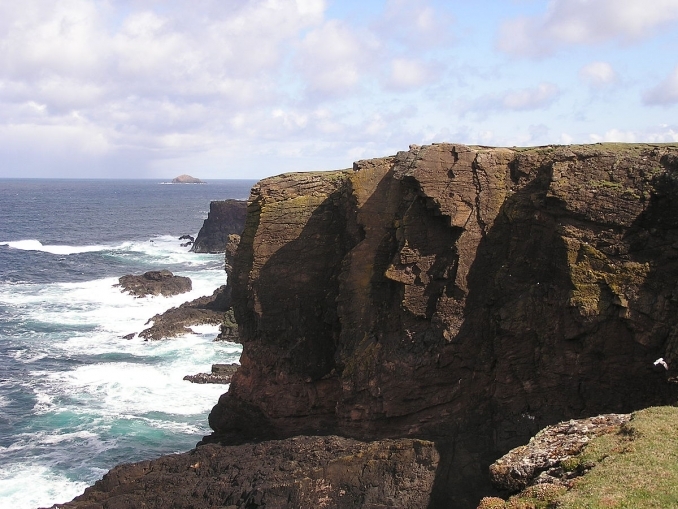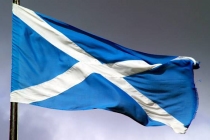Mainland, Shetland

This covers an area of about 374 square miles and is the main island in Shetland. The capital is Lerwick which has evidence of settlement going back 3000 years.
Shetland Museum and Archives
This museum has collections which relate to all aspects of the islands history and is located north of Commercial Road east from the town centre and close to the Viking Bus Station. www.shetland-museum.org.uk
Broch of Clickimin
This broch is located about a mile southwest from Lerwick off the A970 and on an island in Loch Clickimin linked by a causeway. The site dates back to 1000BC with a blockhouse added in about 100BC. The site was originally a Bronze Age farmstead, then an Iron Age ringfort, then a broch of about 32 feet in diameter and wheel-house settlement.
Broch of Mousa
This is the tallest and best preserved broch in Scotland. The diameter is quite small and it stands at about forty-four feet in height. An internal stairway leads to an open parapet at the top of the dry stone wall structure. It is estimated to have been built in about 100BC. The broch is located on the island of Mousa which is about a mile of the east coast of Mainland which is accessed by ferry from Sandwick south from Lerwick.
Jarlshof
This prehistoric and Norse settlement covers times of habitation from Neolithic, Bronze and Iron Ages, Pictish and Norse times and into the medieval period. Remains of all of these settlements can be seen on this site which is open from the beginning of April until the end of September. The site is unique in offering an insight into thousands of years of human activity in Shetland. The site is located at Sumburgh in the south of Mainland.
Old Scatness
Structures on this site date back 2500 years and were discovered in the 1970's when Sumburgh Airport was being expanded. Excavations over the years have uncovered Bronze and Iron Age pottery fragments. The broch that can be seen at the site dates back to 400-200BC and has thick walls and the remains of an internal staircase. Remains of dwellings around the broch were lived in by Iron Age, Pictish and Viking peoples. There is a visitors centre which gives guided tours during the summer months. The site is to the west of Sumburgh Airport off the A970.
St Ninians Isle
This site has the foundations of an old chapel and is on the west coast of Mainland and west from Bigton. Accessible by a stretch of sand unless the tide is very high. The ruins of a twelfth century chapel can be seen. During excavations in 1958 a box of 8th century silver was found under a cross marked slab by Douglas Coutts a local schoolboy who was helping Professor A.C. O.Dell from Aberdeen University. The twenty-eight silver pieces thought to be of Pictish origin are now housed in The National Museum of Scotland in Edinburgh with replicas in Shetland Museum.
Scalloway Castle
This was built in 1600 by the much disliked and cruel Patrick Stewart, Earl of Orkney. The remains of this site are located in Scalloway on the west of mainland about six miles from Lerwick on the A970.
Broch of Culswick
Tthe remains of this broch is located across a causeway in west Mainland on the coast west from Culswick. There is a very big triangular stone over the doorway.
Stanydale Temple
This site is located off the A971 on the minor road towards Gruning. This large Neolithic hall is surrounded by a wall with internal alcoves.
Scord of Brouster
The remains of three Neolithic dwellings can be seen on this site along with field systems and a cairn. The site dates back to about 2250BC and is located off the A971 near Walls.
Broch of Burrafirth
This site has the remains of an early 1st century Pictish broch and is located on a holm to the west of West Burra Firth pier in West Mainland. The site is associated with the Norse story of the death of Thorbjorn, a Viking raider who was killed there.
Punds Water Cairn
This is the remains of a heel-shaped cairn in Mainland. It is located above Punds Water west of the A970 north of Mangaster.
Image: Klippenküste bei Eshaness, Mainland, Shetland © Copyright ThoWi and released into the public domain.
Celtic nation:
- Scotland
Itinerary:
- Scotland Shetland Islands
Place type:
- Natural





